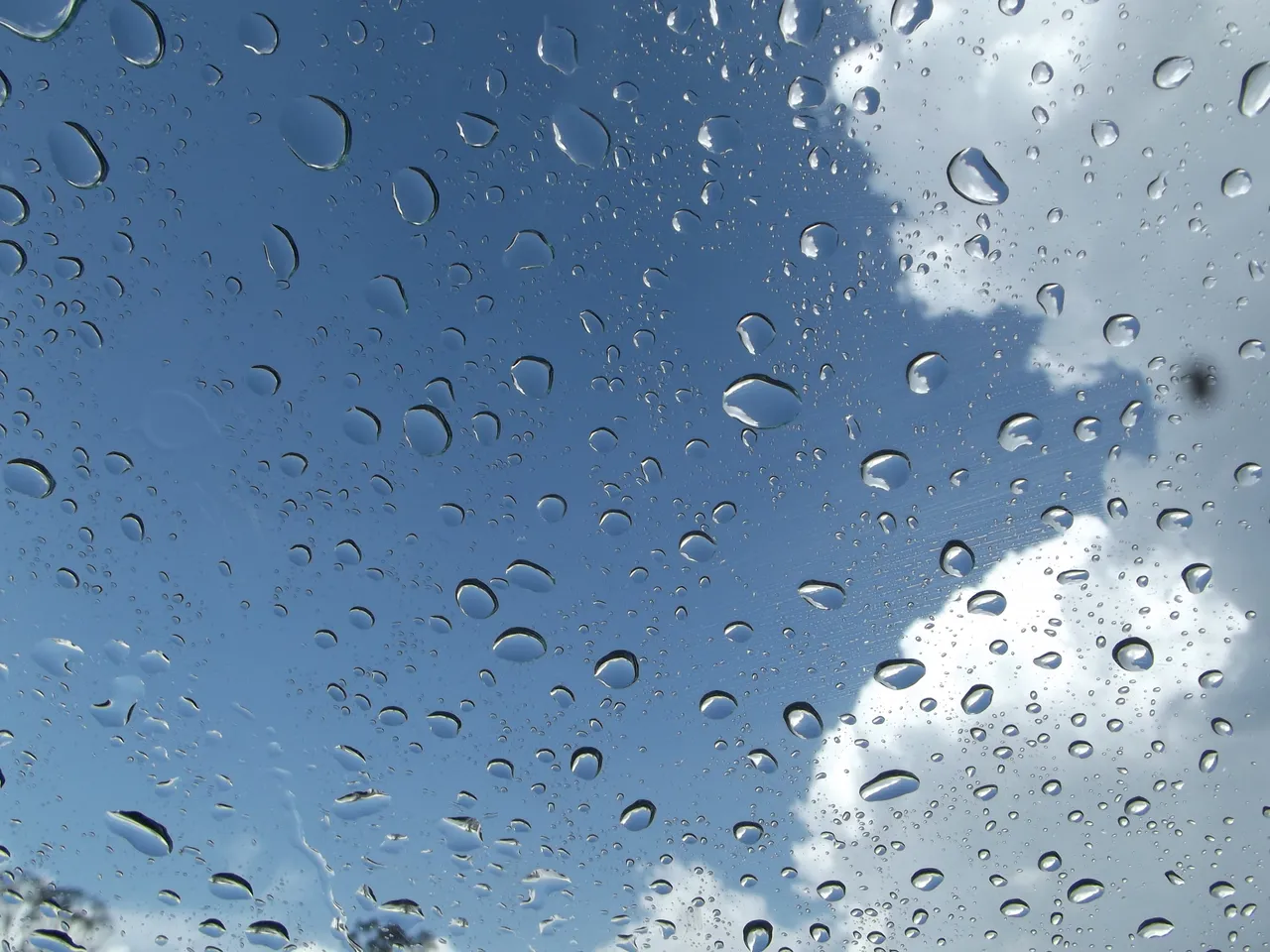
Today is a beautiful day, with a relatively cold weather on this side of planet earth, unlike some days when the sun keeps smiling or the sky keeps crying but days like today,youd just look up and all you'd see is a clear blue sky but not with white fluffy-looking stuff floating in our skies though. For me and some couple of friends, we have been planning a picnic for weeks, but the weather hasn't been favourable for it, and this thus inspired my research on this very topic, just like my self if you have been held off from having picnic due to the weather, then buckle up tight as we learn the little we can and plan our picnic properly admits that rainny season which we find ourselves. Mind you today we learning about the clouds!!
The clouds as I was told holds a lot of ancient stories especially for a number ofbus living in the Africa region of planet earth. When I was way younger than I am now, a common belief was held amongst the older children that beyond the clouds was a deityand heaven* (I really don't believe in that), and level to how true the aforementioned statement is, is definitely not a topic of discussion today, so quickly let's move unto our topic of discussion for today. So right about now, after the cut, I will be carrying out a review on the clouds, its formation types, atmospheric layers and how to easily identify them in the sky (I hope this helps us to plan our picnic)
SO WHAT ARE CLOUDS AND HOW ARE THEY FORMED?!
Clouds as we know them are basically are built on tiny drops of ice crystals or water droplets which then settle on dust particles in the atmosphere. These droplets of water or ice are so tiny (specifically a diameter of about a hundredth of a millimetre) that each cubic metre of air will contain 100 million droplets.
Clouds would either be made up of water or ice droplets, this relatively depends on the temperature of the atmosphere and also the height of the cloud. This is due to the fact that these droplets are so tiny that they could stay in liquid form in temperatures as low as -30 °C. The difference here is that high clouds at temperatures below -30 °C are composed basically of ice crystals. The process of cloud formation however involves the condensation of the invisible water vapour in the air into visible ice crystals or water crystals. Water is always all around us just in form of tiny gas particles which are referred to as water vapour. Aerosols are also tiny particles of salt and dust floating around in the air
These aerosols and water vapour are always getting into each others way. Whenever the air is relatively cooled, some of the water vapours would stick to the aerosols when they bump into each other, this is what we call condensation.
Depending on how big the water droplets are, it would then form around the aerosol particles, as soon as these happens, the water droplets would start to stick together with other droplets, this leads to the formation of clouds. When the air is saturated and cannot hold any more water vapour, the clouds are formed and this occurs in two basic ways:
Firstly when the amount of water in the air has increased, this could happen via the process of evaporation and it happens to a level where the air is unable to hold water any more.
Secondly the air is warmer, it can hold more water vapour. Clouds are basically formed via the process of condensation, for as the air rises it will cool thus reducing the temperature of the air and decreasing its ability to hold water vapour in a bid to bring about condensation.
The enormous variety of sizes, textures and shapes of the clouds is as a result range of ways in which clouds can be formed and the variable nature of the atmosphere. Finding out much more about different classification and types of clouds is what we would be looking at subsequently. Clouds constantly experience changes in appearance over time in an infinite variety of forms.
The World Meteorological Organization (WMO) has given the classifications of clouds to be divided into three levels which are cloud low (CL), cloud medium (CM) and cloud high (CH) and they are also further sub-divided. Let's look at them in details.
source
0 to 2,000m
- The Cumulus Clouds*
The type of clouds called cumulus are very much like puffy and have a cotton-like figure. These clouds falls within an altitudes of about one (1) to two (2) km from the earth's surface. Camulus are pretty much more like the most recognized cloud type as they are use extensively to depicts clouds in magazines, story books as well as weather apps. Cumulus is mostly seen on clear and sunny days, this is the point when the sun hits hard on the earth directly. While the top of the cumulus cloud is round and puffy, the bottoms appears to be very dim in comparison. Late in the morning is their point of appearance and they would disappear in the evening.
- The Stratus Cloud
The stratus cloud falls amongst the low clouds and is this characterized by it's very flat and mostly-featureless, uniform thin layers of which covers a vast area of the sky. The stratus is the cloud which forms a fog or mist and this happens when it gets relatively close to the troposphere. The stratus cloud could mostly be seen in the sky during the period when it's drizzling and on days when there is light mist. Stratus clouds are very common in coastal and mountainous regions.
Stratocumulus
- The Stratocumulus Cloud
The stratocumulus cloud is a combination of two different clouds of which are the stratus and the cumulus clouds. The stratocumulus could be better envisioned to take the imagery of the clouds being spread with butter by an imaginary knife, this would make some parts look puffy while some other parts would be smooth. The stratuscumulus cloud does not cover the sky totally as the sky can still be seen beyond it. If the cloud if viewed from underneath would have a dark honey-comb like structure. The stratocumulus is also very much similar to the cumulus, exception of the bigger and ragged upper parts due to the convections within itself.
- The Cumulonimbus Cloud
The cumulonimbus is also a combination of two clouds which are is the cumulus and the rumbus. The combination of these results in a fluffy white like cloud. The particular clouds spans pretty much the low, middle and high layers and they rise like towers and budge out at the top like cauliflowers. The rain brings the cloud and goes along with it and would only be seen when a storm is approaching.
2,000 to 6,000
- The Altocumulus Cloud
The altocumulus clouds are mainly composed of water droplets, and they are formed at a slightly higher altitude than the lower and the high altitudes clouds. We often refer to them as social clouds due to the fact that they tend to always appear in groups and a grayish white colours. The altocumulus clouds grow by convection, as after the moist air combines with dry air descending. This cloud most times combines with other cloud and rain is formed in the process.
- The Altostratus Cloud
The Altostratus Cloud is another mid-level rain cloud that is known for light drizzles rather than heavy rainfall and it forms a uniform gray to bluish-green hue. The altostratus clouds are formed when stable air mass that could cause condensation of water molecules into clouds are lifted into the atmosphere, then from their uniformly grey appearance, one would easily understand why they are referred to as boring clouds with mostly featureless and colourless thus forming cloud formation. Altostratus clouds usually grow into nimbostratus clouds and usually results in really heavy rainfall.
- The Nimbostratus Clouds
The nimbostratus cloud has its name derived from the Latin words Nimbo which directly spells out rain and also stratus means spreadout. It has its most visible chracteristic to be dark base and spells out STORM out rightly. The cloud is usually found at about three thousand to nine thousand metres from the earth's surface. The Nimbostratus clouds are only formed when there is an accumulation of moisture over a large area. And since they could spread out so thick, they block sunlight and shade the earth.
Above 6,000m
- The Cirrus Clouds
The cirrus cloud just like the is one the most common type of cloud which is easily seen high up in the sky at any moment of the year. They form earlier than other clouds, and they stay up till other clouds must have cleared away. The cirrus cloud has a thin and silky feathery structural appearance. Cirrus clouds are composed mainly by ice crystals from super cold water droplets. The transparency of the cloud is determined by its degree of separation and they are mostly visible when there is a fair weather. Also colours of yellow at sunrise and as red just before sunset.
- The Cirrostratus Cloud
Cirrostratus are the mostly curly sheet-like clouds which could cover a very vast expanse and their colour could vary from light grey to white, also their crystals reflect light from the sun to form it's dazzling halo effect. Alhough they could be have thickness of up to several thousand feet, They appear to be very much translucent and the sun easily has its way through them. These clouds moves often in the west direction and are seen after rainfall in just about twenty hours after they form.
- The Cirrocumulus Cloud
The cirrocumulus clouds . A very visible feature of the cirrocumulus cloud are it's scale like patterns, of which people usually refer to them as mackerel skies. A cirrocumulus cloud form at about 5km from the ground could and can spread out for miles it exhibits simliliar characteristics as the cirrus and cumulus clouds. It could be easily mistaken for the altostratus which has a darker shade of gray. Finally the cirrocumulus cloud never lead to rainfall, so I guess there is a good chance of carrying out a picnic without fear of rain when this cloud is around the corner.
So one beautiful thing I noticed is that there has been a frequent occurrence of the cirrocumulus cloud, so am guessing it will continue this way. Peradventure it does, I am my friends would definitely have our little picnic before the week runs out, hope you learnt a thing or two.
@traviz
Refetences
Classifying Clouds - Public.wmo.int
Low level clouds - Aviationknowledge

